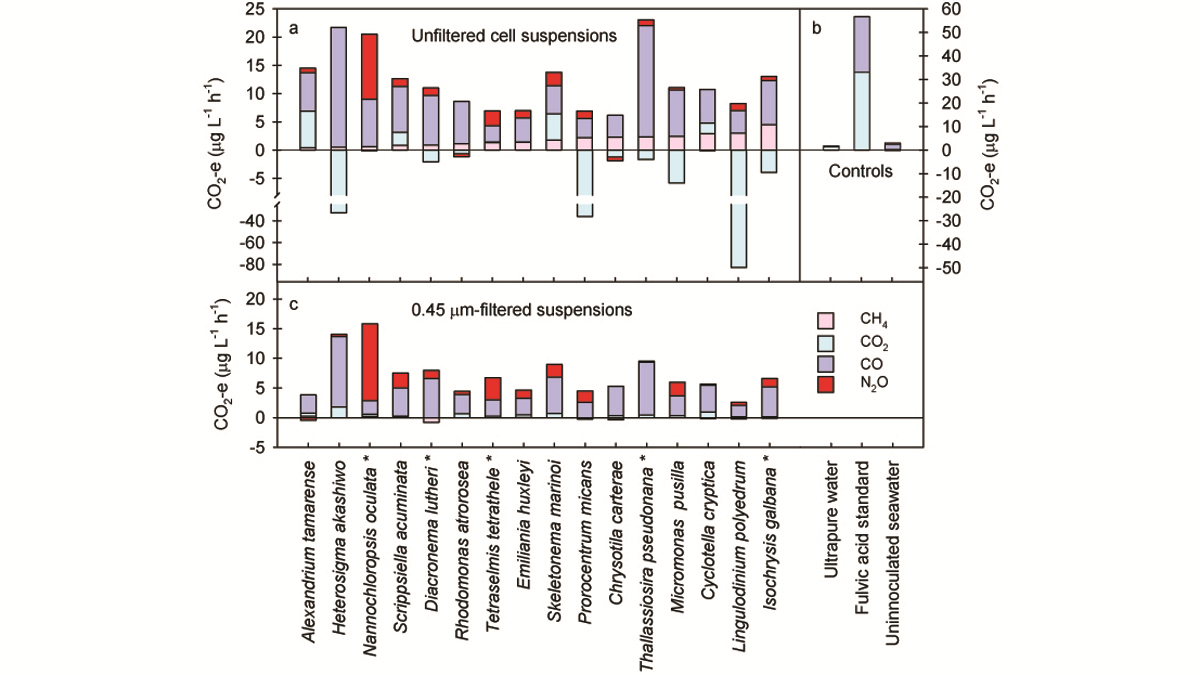Editors’ Highlights are summaries of recent papers by AGU’s journal editors.
Source: Journal of Geophysical Research: Biogeosciences
Marine phytoplankton play a key role in the global carbon cycle. They are key players in the “biological carbon pump” and can transfer gigatons of carbon from the atmosphere into deeper ocean layers. While phytoplankton are important for carbon storage, McLeod et al. [2021] reveal that ultraviolet radiation (UV) can trigger the formation greenhouse gases from marine phytoplankton, offsetting their role in carbon storage.
In this study, the authors experimentally measured the formation of climate-relevant trace gases such as carbon monoxide (CO), carbon dioxide (CO2), methane (CH4), ethene (C2H4), ethane (C2H6), and nitrous oxide (N2O) from 16 phytoplankton cultures after exposing them to UV. Their results indicate that phytoplankton cells can be a net source of greenhouse gases. These results demonstrate that phytoplankton should be considered when studying greenhouse gas formation in ocean surface waters.
Citation: McLeod, A. R., Brand, T., Campbell, C. N., Davidson, K., & Hatton, A. D. [2021]. Ultraviolet radiation drives emission of climate-relevant gases from marine phytoplankton. Journal of Geophysical Research: Biogeosciences, 126, e2021JG006345. https://doi.org/10.1029/2021JG006345
—Marguerite A. Xenopoulos, Editor in Chief, JGR: Biogeosciences

